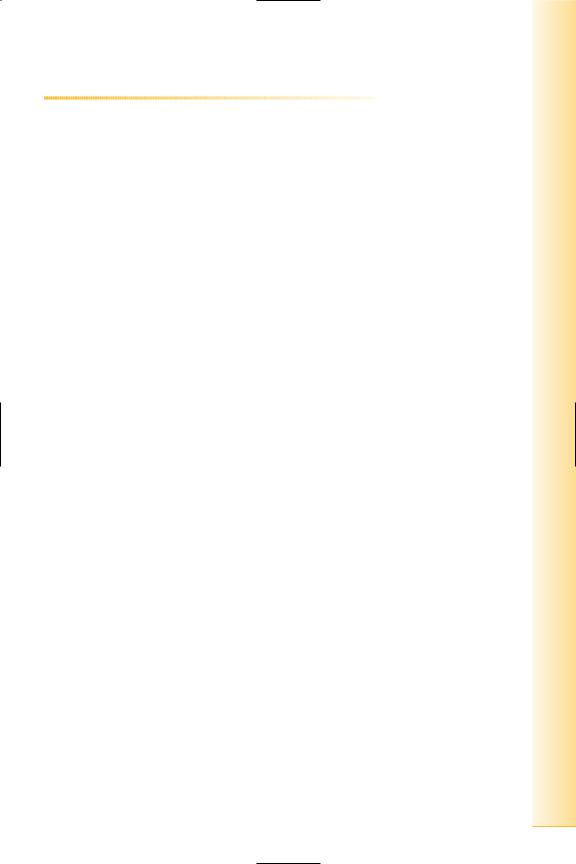
- •Contents
- •Principles and pitfalls of musculoskeletal ultrasound
- •Echogenicity of tissues
- •Chest
- •Supraclavicular fossa
- •Infraclavicular fossa
- •Sternoclavicular joint
- •Chest wall
- •Axilla
- •Upper limb
- •Shoulder
- •Upper arm
- •Elbow
- •Forearm
- •Wrist
- •Hand
- •Abdomen and pelvis
- •Anterior wall
- •Posterior wall
- •Groin
- •Lower limb
- •Thigh
- •Knee
- •Calf
- •Ankle
- •Foot

Principles and pitfalls of musculoskeletal ultrasound
High resolution – best results are obtained using a high frequency linear probe on a matched ultrasound system. Power Doppler is often helpful for pathological diagnosis as well in the identification of normal anatomy.
Anisotropy – this phenomenon produces focal areas of hypo-echogenicity when the probe is not at 90 degrees to the linear structure being imaged. This is particularly noticeable when imaging tendons resulting in simulation of hypo-echoic pathological lesions within the tendon. The sonographer can compensate for this by maintaining the 90-degrees angle or by using compound imaging.
Anatomy – knowledge of the relevant anatomy is essential for accurate diagnosis and location of disease.
Symmetry – The sonographer can often compare anatomical areas for symmetry helping to diagnose subtle echographic changes.
Dynamic – ultrasound successfully lends itself to scanning whilst moving the relevant anatomy, either passive or resistive. This can help to demonstrate abnormalities which may be accentuated by movement.
Palpation – the sonographer has the opportunity to palpate the abnormality or anatomy linking the imaging directly with the symptomatology, in a manner not possible with other types of cross-sectional imaging.
and Principles
of pitfalls ultrasound musculoskeletal
ix


Echogenicity of tissues
Echogenicity may vary somewhat with different ultrasound probe frequencies and machine set-up. This section describes these tissues using the common musculoskeletal presets and frequency 12–5 MHz. Surrounding tissue also influences echogenicity due to beam attenuation.
Fat – pure fat is hypo-echoic/transonic but the echogenicity varies in different anatomy and pathology. Fatty tumours such as lipomas contain areas of connective tissue creating the characteristic linear hyper-echoic lines parallel to the skin. Other fatty areas may vary in echogenicity depending on their structure and surrounding tissue.
Muscle – muscle fibres are hypo-echoic separated by hyper-echoic interfaces. Hyper-echoic fascia surrounds each muscle belly delineating the muscle groups.
Fascia – hyper-echoic thin, well-marginated soft tissue boundaries.
Tendon – the hyper-echoic tendon consists of interdigitated parallel fibres running in the long axis of the tendon. The tendon sheath is hyper-echoic separated from the tendon by a thin hypo-echoic area.
Paratenon – some tendons do not have a true tendon sheath but are surrounded by an hyper-echoic boundary, the para-tenon. For example, the tendo-achilles.
Ligament – hyper-echoic, similar to tendons. Fibrillar pattern may vary in multilayered ligaments.
Synovium/Capsule – these structures around joints are not usually separately distinguishable on ultrasound, both appearing hypo-echoic and similar to joint fluid.
Hyaline cartilage – hypo-echoic/transonic cartilage is seen against highly reflective cortical bone.
Costal cartilage – hypo-echoic, well defined. Well marginated from the hyper-echoic anterior rib end. The echogenicity varies depending on how much calcification it contains.
Fibrocartilage – hyper-echoic, usually triangular-shaped cartilage often with internal specular echoes, for example, the menisci.
Bone/Periosteum – these are indistinguishable in normal bone. Highly reflective hyper-echoic linear/curvi-linear line with acoustic shadowing.
Pleura – hyper-echoic parietal pleura is usually seen in the normal intercostal area. Aerated lung deep to this.
Air/gas – this is also highly reflective and creates characteristic “comet tail” artefacts. Small gas bubbles in tissue may give small hyper-echoic foci whilst aerated lung is diffusely hyper-echoic with comet tails.
Nerve – hypo-echoic linear nerve bundles separated by hyper-echoic interfaces, appearances similar to tendons.
of Echogenicity tissues
xi

